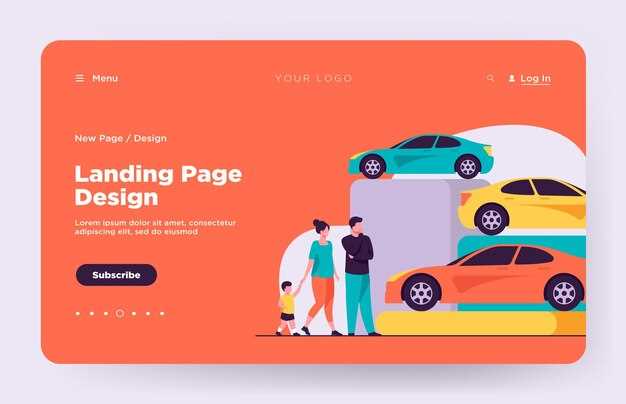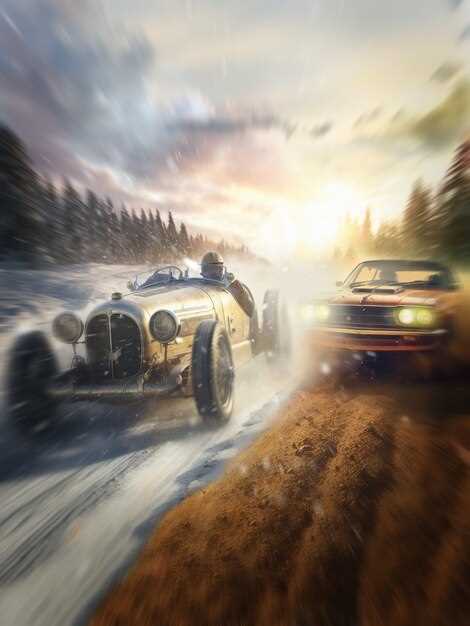To truly appreciate how video games shape car enthusiasm, look at racing simulators such as Gran Turismo and Forza Motorsport. These titles offer realistic driving experiences, sparking interest in car mechanics and tuning among players. The thrill of virtual racing doesn’t just entertain; it encourages players to learn more about automotive performance and history, transforming casual gamers into passionate auto enthusiasts.
Virtual environments allow users to explore a wide array of vehicles, expanding their knowledge about different makes and models. Forza Horizon, for instance, includes a rich assortment of cars from various eras, enhancing an understanding of automotive evolution. Players often find themselves researching real cars they encounter in-game, creating a bridge between virtual experiences and real-world automotive culture.
The community aspects of these games also contribute significantly to car culture. Online forums and social media groups have formed around customization, drifting techniques, and vehicle modifications showcased in these simulators. These platforms facilitate discussions that encourage players to not only share their in-game achievements but also exchange knowledge about real-life car maintenance and upgrades.
Additionally, the rise of content creators on platforms like YouTube and Twitch has amplified this phenomenon. Gamers showcase their racing skills, vehicle builds, and automotive insights, further influencing viewers’ perceptions and interests in cars. The engaging nature of video content makes complex topics more accessible, inspiring a new generation to appreciate both gaming and the automotive industry.
The Role of Racing Games in Shaping Car Preferences
Racing games significantly impact car preferences by showcasing various vehicle characteristics and driving experiences. Enthusiasts often find themselves drawn to specific models through these immersive simulations.
Players engage with hyper-realistic physics, tuning systems, and a wide array of cars. Brands like Ferrari, Lamborghini, and Nissan often feature prominently, leading to increased interest in their real-world counterparts. Gamers frequently identify with their virtual vehicles, which can shift their perception of certain brands.
The customization options in racing games allow players to experiment with different setups, helping them understand the relationship between performance and aesthetics. These experiences drive preferences in areas such as:
- Performance: Players might favor sports cars or high-performance models after experiencing their capabilities in-game.
- Design: Engaging visuals can spark admiration for specific car designs, influencing choices in real-life. Customization features let players amplify this appreciation.
- Culture: Games often incorporate car culture elements, fostering a community around particular brands, making them more appealing.
Online multiplayer modes create a sense of competition, further solidifying the relationship between car choices and gaming. Achievements in these games can translate into real-world aspirations for car ownership. Players may begin to research and engage with automotive events, contributing to a broader interest in car culture.
Industry representatives acknowledge the marketing potential of racing games. Partnerships between gaming companies and car manufacturers produce crossover promotions that enhance brand visibility among young audiences. These collaborations validate the influence racing games have on shaping car preferences, encouraging both brand loyalty and consumer interest.
In conclusion, racing games are not just entertainment; they actively shape consumer preferences and introduce players to automotive culture. As players delve into racing simulations, they cultivate enthusiasm for specific cars that may influence their future vehicle choices.
How Customization Features Foster Personal Connections to Cars
Customization features in video games allow players to create unique vehicles that reflect their personalities. This aspect plays a significant role in enhancing car enthusiasm and developing a deeper bond with the virtual automotive world.
Variety of Options:
Players can select from numerous colors, decals, and body kits, which allows them to craft a vehicle that resonates with their style. Such choices encourage creativity, making each car feel like a personal statement.
Performance Tweaks:
Adjusting engine upgrades, suspension tuning, and tire selection not only modifies a car’s performance but also enables players to express their driving preferences. This hands-on experience creates a sense of ownership.
Community Sharing:
Many games allow players to share their custom designs online. Not only does this showcase creativity, but it also builds community bonds as players receive feedback and admiration for their creations.
Real-Life Parallels:
Customization in games parallels real-world automotive culture, where modifying cars is a popular hobby. This connection encourages players to appreciate automotive design and engineering outside the game.
Emotional Attachment:
Investing time in customizing a vehicle leads to emotional connections. Players often form attachments to their creations, mirroring how enthusiasts feel about their real-life cars.
By integrating intricate customization features, video games inspire a sense of connection that deepens the players’ love for cars, bridging the gap between virtual and real-world automotive culture.
Exploring the Impact of Car Culture in Open-World Games
Open-world games significantly enhance car enthusiasm by allowing players to immerse themselves in expansive environments where driving is a central feature. Titles like “Grand Theft Auto V” and “Forza Horizon” showcase a variety of vehicles, enticing players to explore their performance and aesthetics. The diversity in car selection enables fans to connect with makes and models they adore in real life.
The freedom to customize vehicles in these games amplifies this connection. Players can modify engines, paint jobs, and body kits, mirroring the real-life tuning culture. This creative outlet not only satisfies players’ desires for personalization but also encourages discussions about automotive performance and style among the community.
In-game events such as street races and car meets foster social interaction. Players share tips, showcase their customized rides, and compete with one another, building a sense of community that mirrors real-world car culture. Such communal experiences enhance passion for automobiles, turning virtual racing into an avenue for automobile exploration.
Soundtracks featuring iconic car-themed songs enrich the gaming experience, reminding players of memorable moments associated with driving. These auditory elements bolster the connection to both the game and the thrills of real-world driving adventures.
Additionally, these games highlight automotive history and the evolution of car design, often featuring classic models alongside modern supercars. This inclusion sparks interest in automotive design and promotes appreciation for both vintage and contemporary vehicles.
Ultimately, open-world games facilitate a multi-faceted engagement with car culture, blending exploration, customization, and community interaction. Gamers who engage with these elements often foster a deeper appreciation for real-world automotive passion and culture.
The Community and Social Aspects of Online Racing Games
Join dedicated online forums and communities centered around racing games. Players share tips, discuss strategies, and organize competitions. Sites like Reddit and Discord host numerous groups where members can interact in real-time.
Participate in seasonal events and multiplayer races to strengthen bonds with fellow racers. Engaging in these activities increases motivation and creates a sense of belonging. Many racing games host leaderboards and competitions, boosting camaraderie among competitors.
Consider joining or creating a racing team. These teams not only provide you with allies to race with but also create opportunities for collaborative gameplay and skill development. Teams often organize practice sessions, enhancing communication and teamwork.
Collaboration extends into content creation too. Players frequently share their racing experiences through streaming platforms or YouTube, showcasing gameplay, tutorials, and elaborate car customizations. This not only enhances engagement but also draws in new players eager to join the community.
Here’s a quick overview of the social dynamics found in various online racing games:
| Aspect | Description |
|---|---|
| Community Engagement | Active forums and discussion groups provide a space for sharing experiences and strategies. |
| Events and Competitions | Regular tournaments enhance friendly competition and community interaction. |
| Team Dynamics | Forming racing teams encourages cooperation and enhances gameplay experiences. |
| Content Creation | Sharing gameplay videos promotes engagement and attracts new players to the community. |
Participate consistently in these aspects to enrich your experience in online racing games. Building connections not only improves your skills but also enhances your enjoyment of the sport. Embrace the community and see how it enhances your passion for racing.
Realism in Driving Simulators: Does It Translate to Real-Life Enthusiasm?
Driving simulators with high realism increase car enthusiasts’ passion for real-world driving. Titles like “Assetto Corsa” and “Forza Motorsport” offer lifelike environments and accurate vehicle physics, translating virtual experiences into a deeper appreciation for actual cars.
Gamers who spend hours tuning vehicles in simulators often transfer that knowledge to real-life modifications, fostering skills in performance upgrades and understanding engineering nuances. Enthusiasts frequently gather in forums to share insights from their virtual experiences, bridging the gap between gaming and practical automotive knowledge.
Many find that practicing in simulators enhances their reaction times and driving techniques. Studies show that players can develop muscle memory for handling real cars through simulation. This transferability of skills not only boosts confidence on the road but also encourages safe driving practices.
Social dynamics play a role too. Multiplayer modes facilitate connections with other car lovers, sparking real-life meetups and car culture events. Through these social interactions, gamers may explore various automotive activities, from track days to car shows, igniting a sense of community.
For newcomers to driving, simulators can serve as an introduction to vehicle dynamics and road rules. This controlled environment reduces the intimidation factor associated with first-time driving, helping to build enthusiasm for pursuing a driver’s license and exploring automotive hobbies.
In summary, realism in driving simulators does indeed translate to a tangible enthusiasm in the real world. By engaging with these platforms, players cultivate skills, knowledge, and connections that enrich their appreciation for automotive culture and driving. The positive impact on passion for cars demonstrates the significant role that simulation gaming can play in the broader automotive community.
Music, Aesthetics, and Design: How Games Shape Car Trends
Incorporate soundtracks from popular racing games into your playlist to fuel your passion for cars. Titles like “Need for Speed” or “Forza Horizon” curate high-energy music that captures the thrill of automotive culture. The beats and rhythms can inspire your choice of vehicles, from sleek sports cars to classic muscle machines.
Game aesthetics profoundly influence car design trends. Titles such as “Gran Turismo” showcase meticulously detailed vehicles, showcasing a blend of realism and imagination. Pay attention to the designs featured; these games often highlight innovative concepts that manufacturers may adapt for real-life models, setting new standards for aesthetics.
The visual style of racing games impacts the perception of car brands. Exotic cars featured in games often encapsulate aspirational language in their design, linking speed with sleek lines. Examine how game developers use lighting and environments to enhance the appeal of vehicles, encouraging manufacturers to follow suit when designing promotions for their latest models.
Invest time in analyzing cars depicted in games. Racing simulations often feature the latest models, allowing you to spot trends before they hit the streets. Gaming environments emphasize the characteristics of various vehicles, from their handling to their visual flair. These representations reflect what players find appealing, providing cues for both car enthusiasts and manufacturers alike.
Engage with the online community to explore discussions on car culture stemming from gaming. Social media platforms and forums buzz with conversations about vehicle designs seen in games. Participate in these discussions to gain insights into how gaming trends translate into real-world modifications and preferences among car enthusiasts.
Finally, recognize how game-inspired designs influence customization trends. As players modify cars in games, they often translate those ideas into real-life modifications. Keep an eye on what players choose in terms of color schemes and body kits; these choices often ripple into what becomes popular in the automotive aftermarket.






